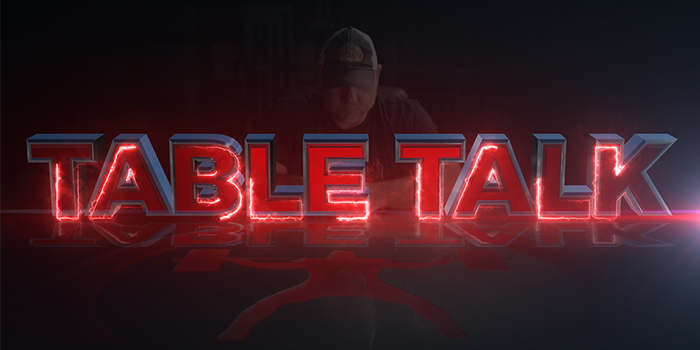
Dave was 13 years old when he competed in his first powerlifting meet. After decades of experience and countless mistakes along the way, how would he recommend a young teenager interested in powerlifting get started? After years of learning, what would he tell a teenager to do differently than he did? For today's Table Talk, Dave responds to a question about precisely this topic:
"How should a 15-year-old kid who is interested in powerlifting start training for a meet?"
Dave begins his answer by stating that if the kid has no sporting background and has just been a gym rat, the best route is to spend several months working on aerobic capacity (also referred to as GPP or work capacity). This would include things such as high-rep technique work on the three main lifts, sled drags, and other general conditioning work. For accessory work after the main movements, Dave recommends using a circuit style setup. Pick 10 exercises that include both free weights and machines, take one minute of rest between each exercise, and add an additional run through the circuit each week. After four to six weeks of this, adequate conditioning should have been built for powerlifting training.
Strength Plus Podcast #1 with Dave Tate
If the teenager already has a sporting background, the weeks of general conditioning work will not be necessary, as he likely already has the work capacity needed to train for powerlifting.
For programming, Dave admits that he is biased toward a Westside or conjugated approach, and is very clear on two reasons he recommends it for beginners:
1. It teaches them how to strain, which they don't currently know how to do.
2. It teaches them good technique, which they don't currently have.
He also includes some general considerations for programming this style of training for a young beginner:
- Pick safe lifts for max effort movements (this means no good mornings).
- For dynamic days, use a weight that he can keep solid technique with and push with as much force as possible. Do 12 to 15 sets of two on the squat and the bench, with no more than a minute rest. He can add a little bit of weight each week as long as the lift doesn't slow down.
- Limit each training session to a total of five to six exercises. Make sure there's one for abs and lower back on lower body days.
- Pick exercises that are fun. At this point, technique will have much more of an impact on strength than physical development will, so don't obsess over selection of exercises.
- Always focus on technique.
Dave then compares this to the case of an older lifter:
"How should a 49-year-old lifter get back into the game after a 13-year layoff?"
Dave doesn't believe that training has to change much once a person reaches 40 years old — what matters is how healthy you are when you get there. Have you spent 15 years beating your body down and reducing the integrity of your joints, or have you spent 15 years without doing great harm to your body? It all comes down to training age.
The first step is precisely what it is for the beginner: building the aerobic base. After an aerobic capacity to recover from training has been built, the older lifter after a long layoff will benefit from easing into the training. Dave's advice to such a lifter is that, at 49 years old, you won't do the same things you were doing 13 years ago when you were training regularly. Maybe in your first weeks back, the best option will be doing only one working squat set, and then maybe a second work set the following week until you've built the ability to tolerate the increased training.
Most importantly, Dave says to think about where you want to be a year from now, not where you want to be a week from now. Dave then gives specific parameters for selecting a powerlifting meet and setting goals.










